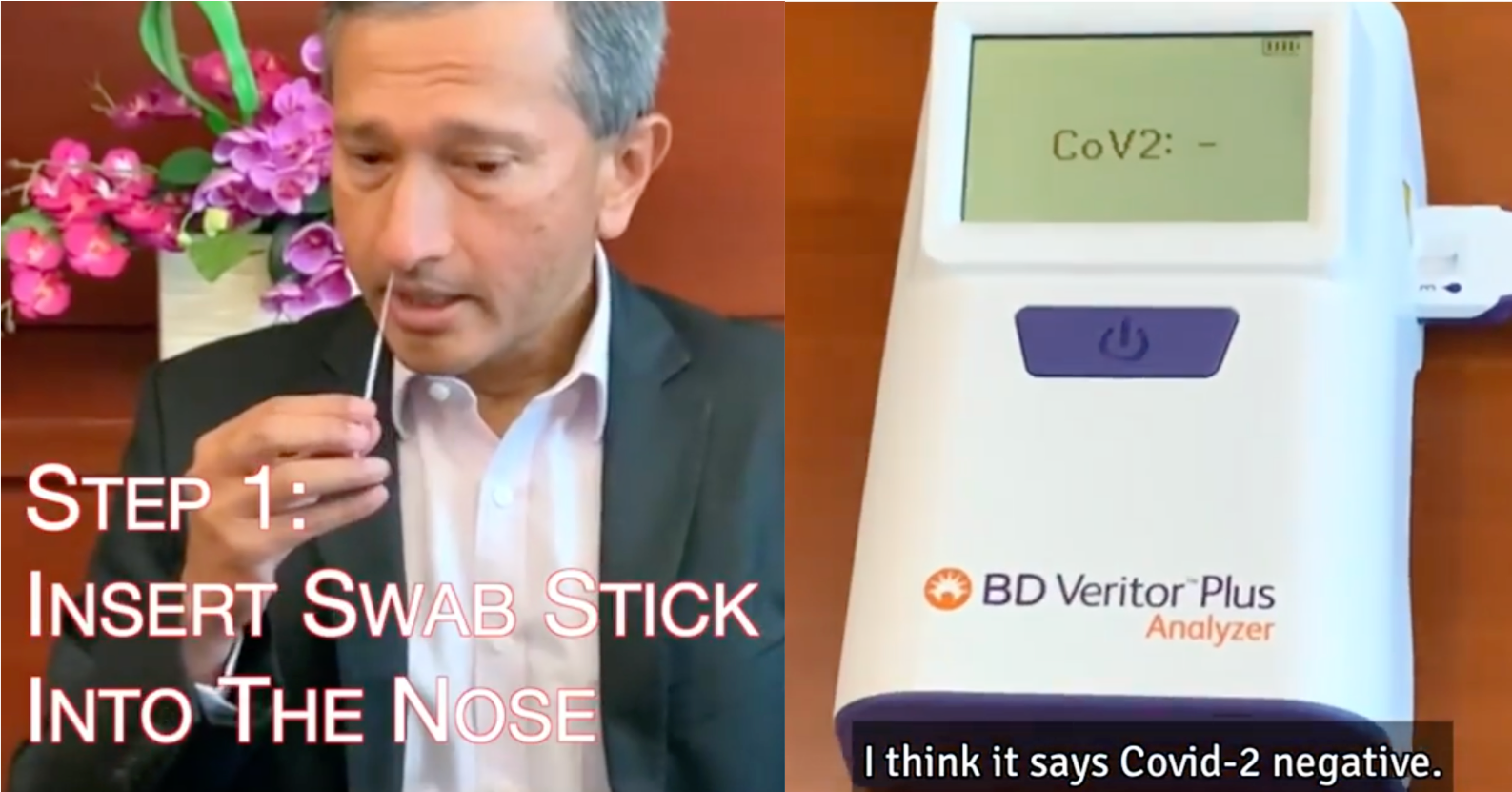Testing for Covid-19 is a key part of Singapore's strategy to overcome the pandemic.
With the recent announcement that Singapore will soon open its borders to welcome travellers from overseas, the country will be using "rapid tests" to ensure as far as possible that visitors are Covid-free before arriving in Singapore.
But if you haven't gone for a Covid-19 test, you may be interested to know how it's actually done.
On Oct. 22, Minister for Foreign Affairs Vivian Balakrishnan demonstrated, via a Facebook video, the Covid-19 Antigen Rapid Test in order to "demystify" the testing process.
"In a way, similar to what may happen when we do these tests for large-scale events. Show you how quickly and I would say, reasonably conveniently, how it could be done," he said.
Step 1: Insert swab stick
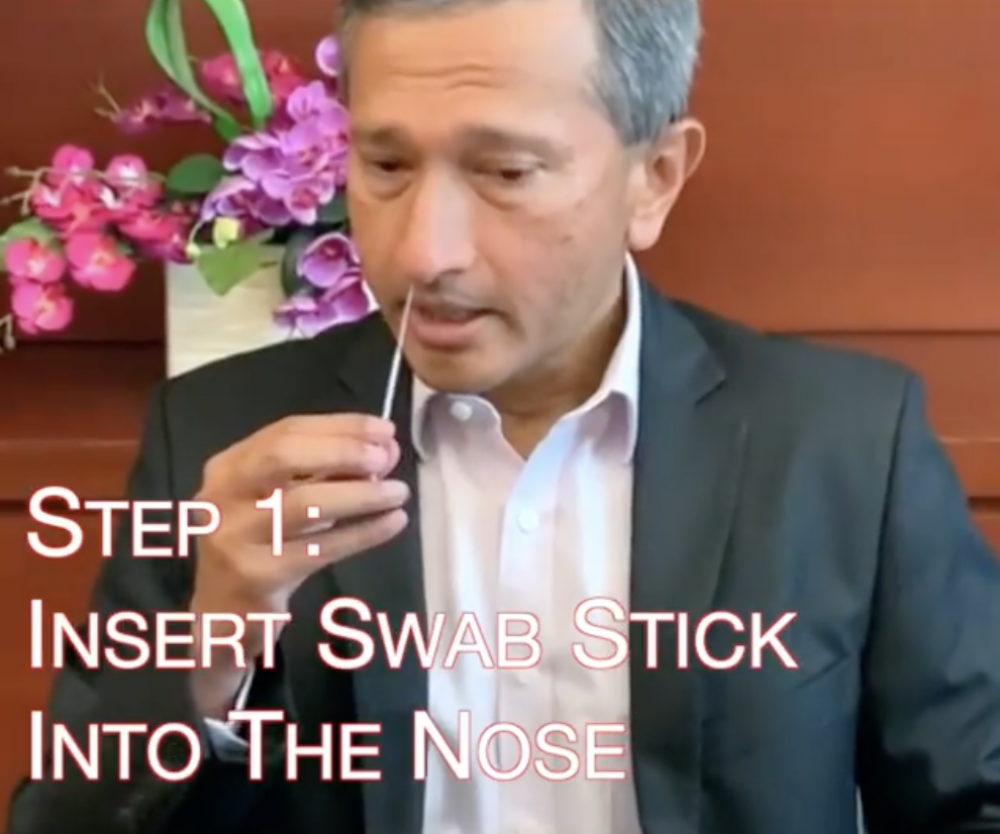 Screenshot from Vivian Balakrishnan's Facebook page.
Screenshot from Vivian Balakrishnan's Facebook page.
Vivian noted that in a full nasopharyngeal swab you'd go deeper, "all the way back", but it is not necessary for this rapid test. However, it should go in about 2.5cm.
It is twirled five times to pick up the mucus and cells, then taken out and inserted into the other nostril, and also twirled five times.
He remarked that it might not be comfortable, but neither is it painful.
Step 2: Insert swab stick into reagent
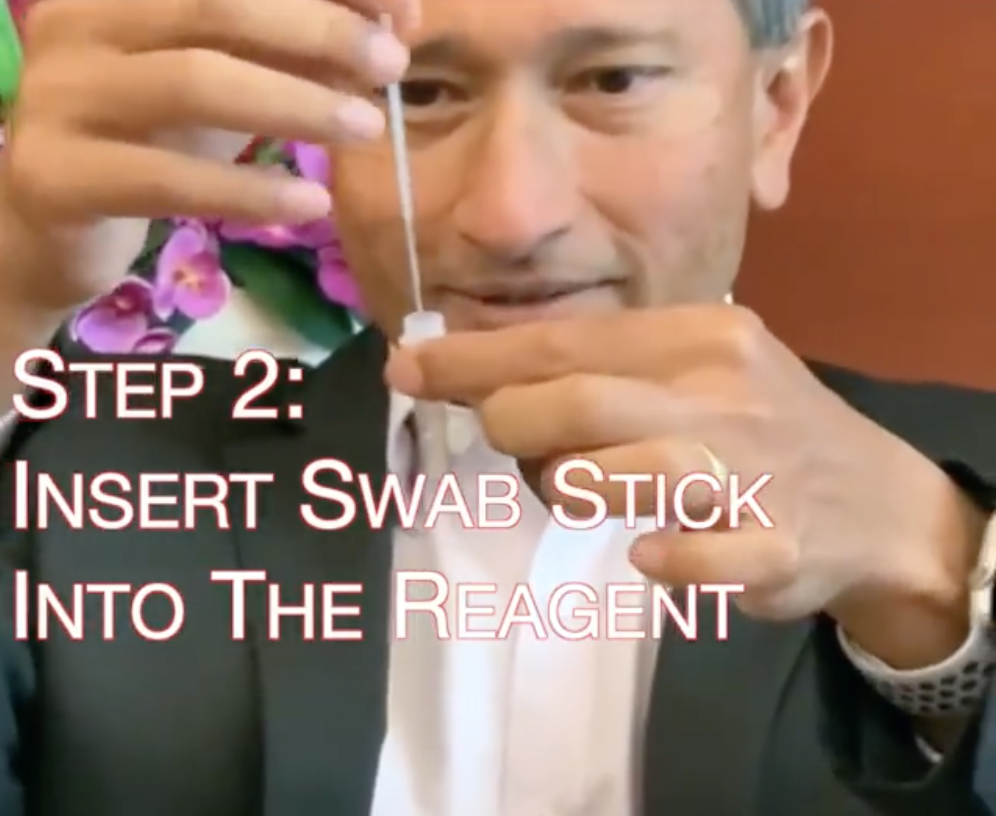 Screenshot from Vivian Balakrishnan's Facebook page.
Screenshot from Vivian Balakrishnan's Facebook page.
The swab stick is then inserted into a liquid reagent, and swirled around to dislodge the mucus.
This step takes about 15 seconds or so.
Step 3: Cap the reagent container
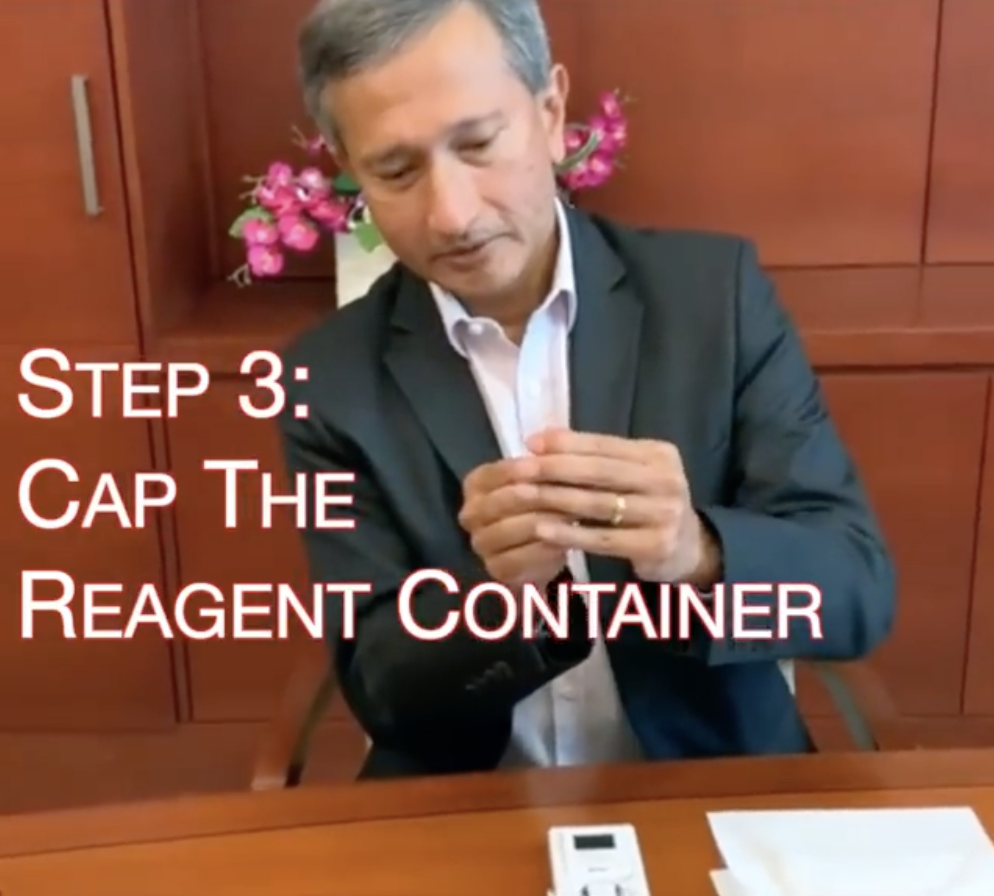 Screenshot from Vivian Balakrishnan's Facebook page.
Screenshot from Vivian Balakrishnan's Facebook page.
The container is capped and you should hear a click.
The container is then shaken thoroughly.
Step 4: Put three drops into reader
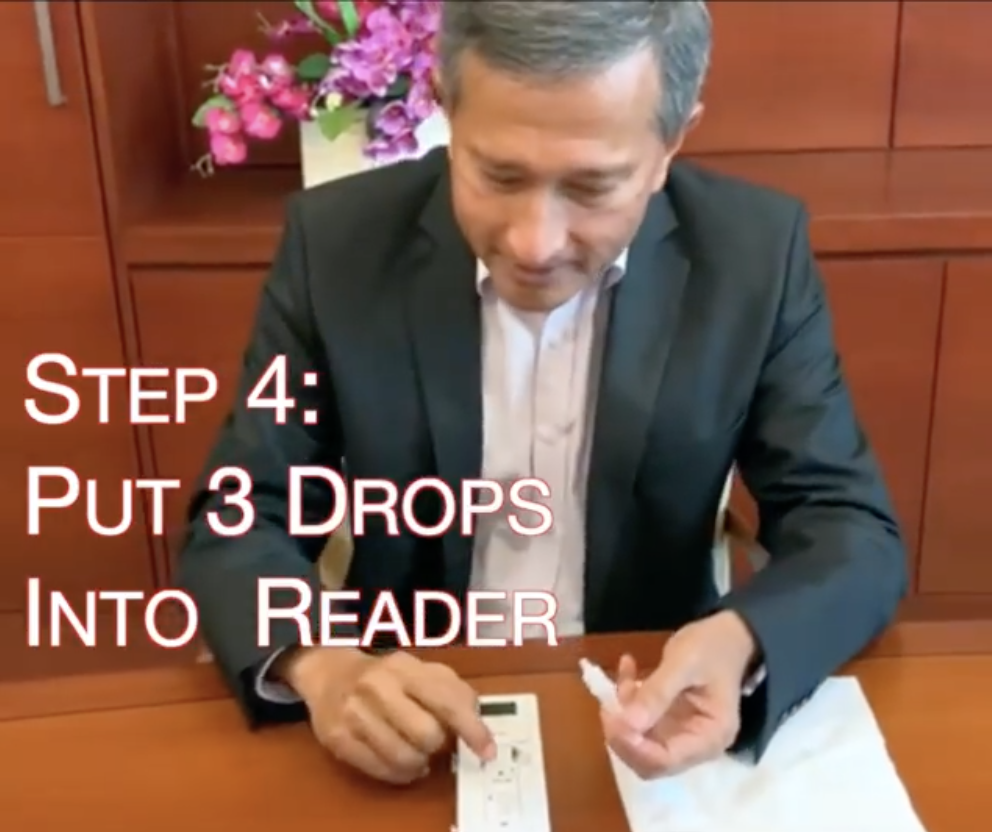 Screenshot from Vivian Balakrishnan's Facebook page.
Screenshot from Vivian Balakrishnan's Facebook page.
Next, you squeeze three drops into the receptacle's pool.
Step 5: Start the timer
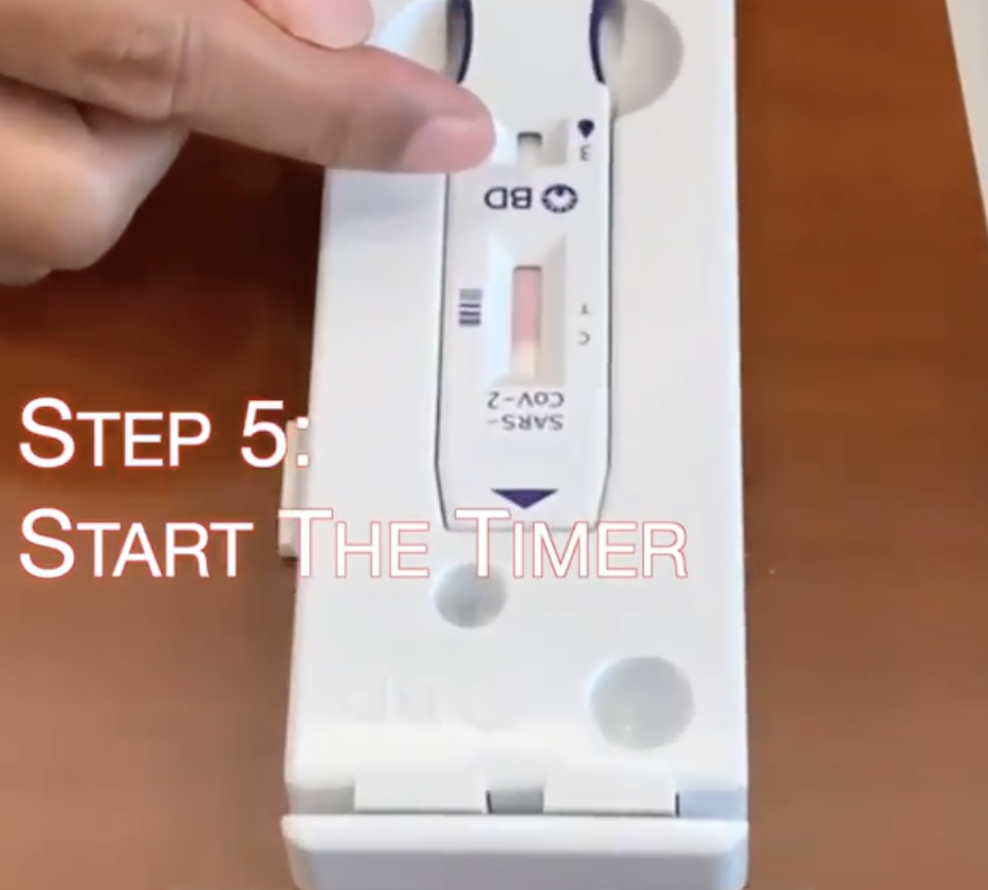 Screenshot from Vivian Balakrishnan's Facebook page.
Screenshot from Vivian Balakrishnan's Facebook page.
Once the drops have been, well, dropped, the timer is started.
The ink rises, and two lines should appear, one at the "C" mark (control) and another at the "T" mark (test).
The receptacle is then inserted into an analysis machine, which will come up with the result.
You can watch the full video below:
Related story:
Top image from Vivian Balakrishnan's Facebook page.
Totally unrelated but follow and listen to our podcast here
If you like what you read, follow us on Facebook, Instagram, Twitter and Telegram to get the latest updates.
